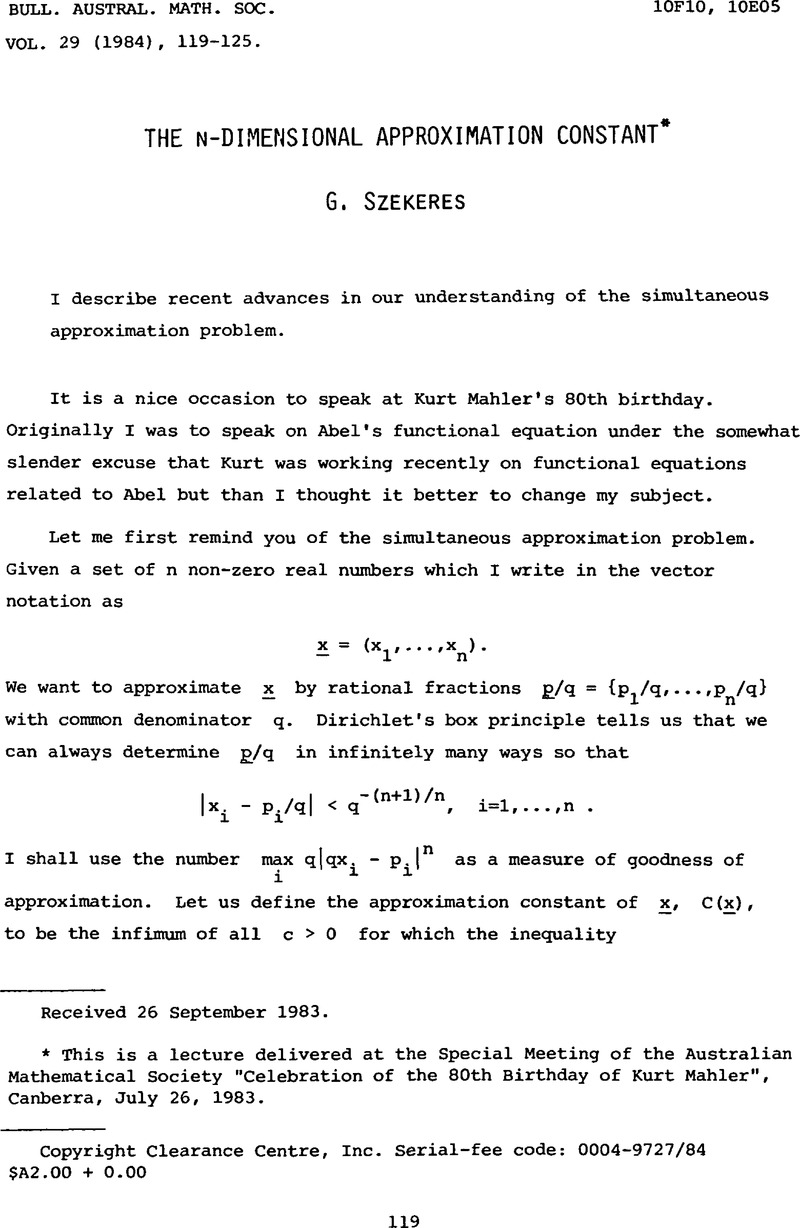Crossref Citations
This article has been cited by the following publications. This list is generated based on data provided by Crossref.
1987.
Geometry of Numbers.
Vol. 37,
Issue. ,
p.
632.
Lagarias, Jeffrey C.
and
Pollington, Andrew D.
1995.
The continuous Diophantine approximation mapping of Szekeres.
Journal of the Australian Mathematical Society. Series A. Pure Mathematics and Statistics,
Vol. 59,
Issue. 2,
p.
148.
Briggs, Keith
2003.
Some explicit badly approximable pairs.
Journal of Number Theory,
Vol. 103,
Issue. 1,
p.
71.





